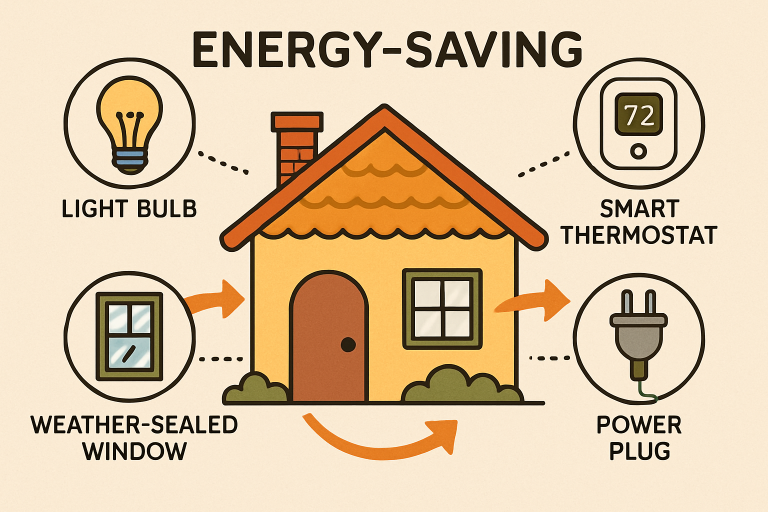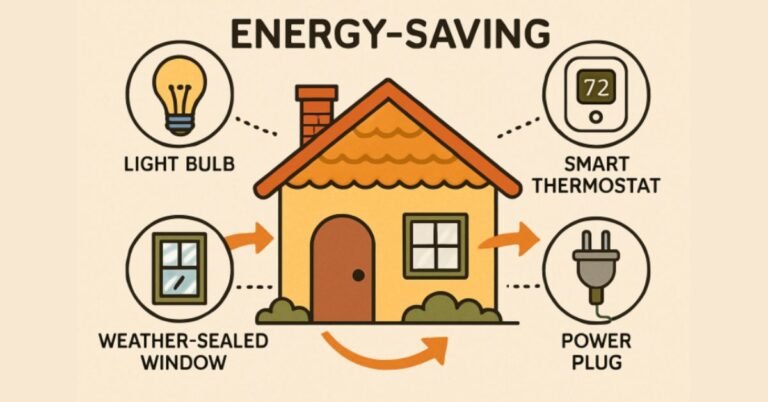Why Cut Your Energy Bill?
Energy bills represent one of the highest ongoing costs for most households, but cutting those costs is about more than just saving money. By reducing energy consumption, you help lower demand on the grid and decrease your carbon footprint, making your home more comfortable and sustainable. Whether you’re renting, own your home, or manage a multi-generational household, implementing strategies for how to reduce your energy bill in Kansas City can offer immediate and long-term benefits.
Energy prices are fluctuating, and environmental impact is growing. Lowering energy usage reduces strain on natural resources and helps communities transition to cleaner, more efficient solutions. Saving energy leads to healthier homes, with well-insulated, well-sealed homes staying cooler in summer and warmer in winter. Everyone can contribute by adopting modern energy-saving techniques, starting with current management and gradually introducing more advanced strategies.

Understanding Where Your Energy Goes
Understanding energy usage is crucial for reducing waste. Heating and cooling systems are the largest energy users in American homes, followed by water heating, appliances, and lighting. However, many households discover hidden energy drains, such as standby power from electronics or inefficient appliances. A thorough review of utility bills can reveal usage spikes and seasons with high energy costs. Combining this knowledge with understanding which appliances use the most power helps set achievable goals for energy reduction.
Simple Every-Day Habits That Save Money
- Switch off lights and electronics when not in use. Even turning off one unused light in a high-traffic room adds up over the months.
- Laundry and dishwasher hacks: Use cold water for washing clothes and only run dishwashers and washing machines with full loads. These simple changes can trim water heating and appliance usage by 10-20%.
- Adjust your thermostat by just a degree or two. Lowering the set point in winter or raising it in summer can result in significant annual savings.
- Unplug chargers and entertainment systems to avoid so-called “vampire energy” consumption that continues even when devices are switched off.
Consistently practicing these habits not only reduces your monthly bills but also creates a culture of energy saving among everyone in the household.
DIY Weatherproofing for Year-Round Savings
Drafts, air leaks, and inadequate insulation are major causes of lost heating and cooling. DIY fixes like weather stripping, door sweeps, and caulk can save homeowners up to 20% on heating and cooling costs annually. To identify drafts, hold a candle near windows or doors and watch for flickers. Apply weather stripping to movable parts of doors and windows, use caulk for stationary parts and gaps, upgrade attic insulation, and install foam gaskets behind light switch plates. Regularly checking for air leaks can improve home comfort year-round.
Smart Home Upgrades That Pay Off
- Smart thermostats: Programmable and learning thermostats adjust heating and cooling automatically, tailoring use to your schedule. The EPA estimates such upgrades can save homeowners about 10-12% on heating and 15% on cooling annually.
- LED lighting: Swapping out older bulbs for LEDs reduces lighting energy use by up to 75%, and these bulbs last significantly longer.
- Energy-efficient appliances: Look for high Energy Star ratings and consider replacing old refrigerators, washers, and HVAC systems. While the upfront cost may be higher, rebates and long-term savings often offset the investment within a few years.
These upgrades, combined with routine maintenance, make a measurable difference in monthly utility costs.
How to Monitor and Analyze Your Energy Use
Regularly monitoring your energy usage is crucial for controlling your energy consumption. Utility companies offer real-time tracking through online dashboards or mobile apps. Smart plugs can help identify energy-consuming appliances. Evaluate changes after upgrades or behavioral adjustments and look for unexplained spikes, which may indicate outdated appliances or leaks. Setting energy reduction goals and regularly reviewing progress can reinforce good habits and alert you to inefficiencies.
Seasonal Checklist: Staying Energy Efficient All Year
- Spring/Fall: Schedule heating and cooling system tune-ups, clean vents, and check insulation. It’s also a good time to repair weatherproofing and upgrade filters.
- Summer: Use ceiling fans, keep blinds closed during the hottest parts of the day, and minimize oven use. Set your AC only as low as necessary for comfort—each degree can make a big difference.
- Winter: Reverse ceiling fans to run clockwise, keeping warm air circulating. Lower thermostat settings at night and use extra blankets instead of higher heating.
Staying proactive season by season keeps efficiency top of mind and controls costs.
Extra Tips for Larger Households
- Coordinate energy-heavy activities like laundry and dishwashing to run during off-peak hours if possible. This reduces both demand on the system and your charges with time-of-use rates.
- Leverage group behavior by turning energy efficiency into a team activity—set household goals, swap tips, and share responsibilities for unplugging devices and closing doors.
- For renters and multi-generational homes, consider using power strips to make unplugging easy, requesting landlord upgrades for old appliances, and educating all residents about simple habits that save.
Involving everyone ensures your efforts aren’t undone and can multiply savings for larger or busier homes.
Conclusion
Lowering energy costs is achievable through smarter habits, targeted upgrades, and being mindful of energy usage. Simple daily changes, such as turning off unused lights and weatherproofing, can lead to significant savings. These actions not only provide a more comfortable home, a lighter environmental footprint, but also long-term resilience against fluctuating energy prices. By starting small and gradually incorporating advanced strategies, anyone can control their energy use and create a sustainable cycle of savings throughout the year.

